
Gornergrat: The Pinnacle of Swiss Alpine Beauty
Discover Gornergrat, Switzerland’s ultimate mountain destination offering panoramic views of the Matterhorn, thrilling activities, and pristine natural beauty all year round.
Gornergrat, located in Switzerland, is a breathtaking mountain ridge that offers some of the most stunning views in the Swiss Alps. It is famous for its panoramic vistas of the Matterhorn and the surrounding peaks. This destination is easily accessible via the Gornergrat Railway, one of the highest cogwheel trains in Europe, making the journey itself an unforgettable experience. Upon arrival at the top, visitors are greeted with a spectacular 360-degree view that includes 29 peaks over 4,000 meters high. The Gorner Glacier, the second largest glacier in the Alps, is also visible from this vantage point. On clear days, the sight of these majestic mountains and glaciers is nothing short of awe-inspiring. Gornergrat is not just about the views; it also offers various activities for tourists. In the winter, it transforms into a skier's paradise with well-groomed slopes and trails. During the summer, it becomes a haven for hikers and nature lovers. There are also several restaurants and observation platforms where visitors can relax and take in the scenery. Whether you are an adventure seeker or someone who simply enjoys the beauty of nature, Gornergrat provides a unique and memorable experience. Its combination of natural splendor and accessibility makes it a must-visit destination in Switzerland.
Local tips in Gornergrat
- Check the weather forecast before heading up; clear skies offer the best views.
- Purchase a Swiss Travel Pass for unlimited travel on the Gornergrat Railway.
- Visit early in the morning to avoid crowds and get the best light for photography.
- Dress in layers; temperatures can vary greatly at different altitudes.
- Bring sunscreen and sunglasses, as the sun's reflection on the snow can be intense.
Gornergrat: The Pinnacle of Swiss Alpine Beauty
Gornergrat, located in Switzerland, is a breathtaking mountain ridge that offers some of the most stunning views in the Swiss Alps. It is famous for its panoramic vistas of the Matterhorn and the surrounding peaks. This destination is easily accessible via the Gornergrat Railway, one of the highest cogwheel trains in Europe, making the journey itself an unforgettable experience. Upon arrival at the top, visitors are greeted with a spectacular 360-degree view that includes 29 peaks over 4,000 meters high. The Gorner Glacier, the second largest glacier in the Alps, is also visible from this vantage point. On clear days, the sight of these majestic mountains and glaciers is nothing short of awe-inspiring. Gornergrat is not just about the views; it also offers various activities for tourists. In the winter, it transforms into a skier's paradise with well-groomed slopes and trails. During the summer, it becomes a haven for hikers and nature lovers. There are also several restaurants and observation platforms where visitors can relax and take in the scenery. Whether you are an adventure seeker or someone who simply enjoys the beauty of nature, Gornergrat provides a unique and memorable experience. Its combination of natural splendor and accessibility makes it a must-visit destination in Switzerland.
When is the best time to go to Gornergrat?
Iconic landmarks you can’t miss
Gornergrat Railway
Experience breathtaking views and rich heritage aboard the Gornergrat Railway, a scenic jewel in the Swiss Alps leading to the stunning Matterhorn.
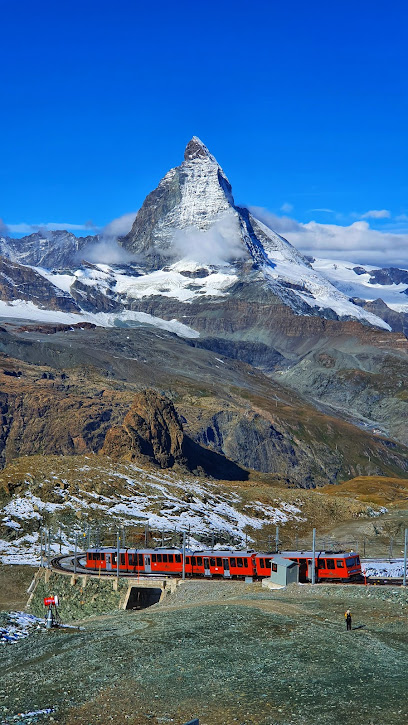
Gorner Gorge
Experience the breathtaking beauty of Gorner Gorge, a stunning natural preserve in the Swiss Alps, perfect for nature lovers and adventure seekers alike.
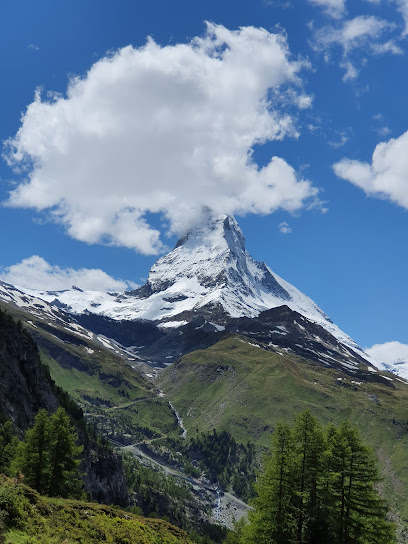
Gornergrat Observation Platform
Experience breathtaking views of the Swiss Alps from the Gornergrat Observation Platform, a must-visit tourist attraction near Zermatt.
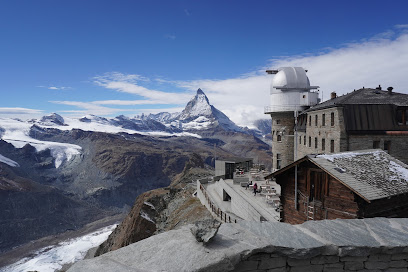
ZOOOM the Matterhorn @Gornergrat
Discover the breathtaking views and interactive exhibits at ZOOOM the Matterhorn, your gateway to the Swiss Alps' stunning beauty and rich history.
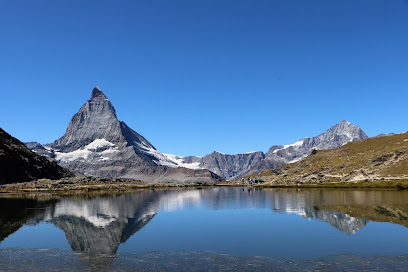
Chapelle du Gornergrat Bernhard von Aosta
Discover the breathtaking Gornergrat Chapel, a spiritual haven nestled in the Swiss Alps, offering stunning views and a serene atmosphere for all visitors.
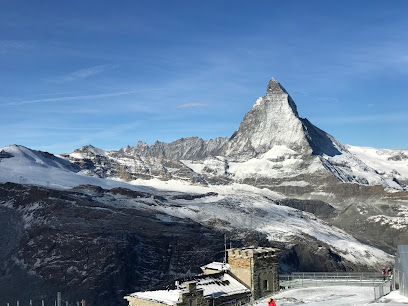
Observatorium Gornergrat
Discover the breathtaking views and celestial wonders at Observatorium Gornergrat in the heart of the Swiss Alps, a must-see for every traveler.
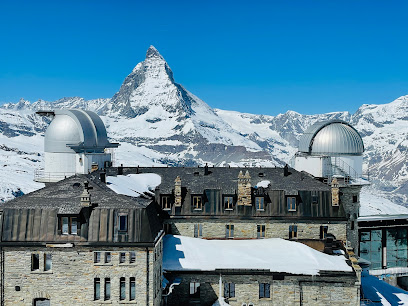
Grand Tour of Switzerland ViewPoint Gornergrat-Matterhorn
Experience breathtaking views of the Matterhorn and Swiss Alps at Gornergrat, a premier tourist attraction in Zermatt.
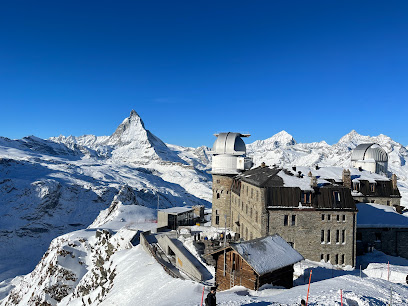
Steinmännchen
Experience the breathtaking beauty and cultural richness of Steinmännchen in Zermatt, a highlight of your Swiss Alps adventure.
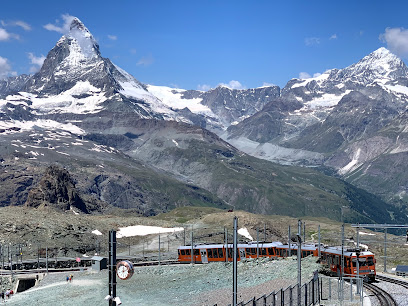
Unmissable attractions to see
Matterhorn Glacier Paradise
Experience the breathtaking heights of Matterhorn Glacier Paradise, where stunning views and thrilling activities await in the Swiss Alps.
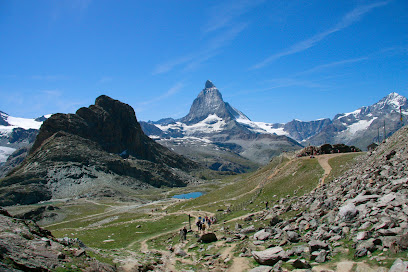
Matterhorn Museum - Zermatlantis
Explore the rich history of Zermatt at the Matterhorn Museum - Zermatlantis, where alpine heritage meets engaging exhibitions and stunning views.
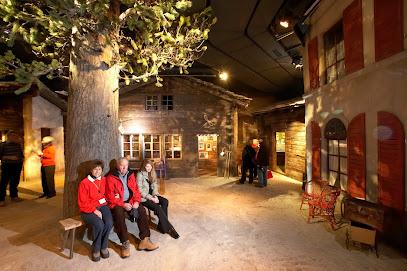
Gorner Gorge
Explore Gorner Gorge: A breathtaking natural preserve in Zermatt, Switzerland, renowned for its stunning views and unique geological features.
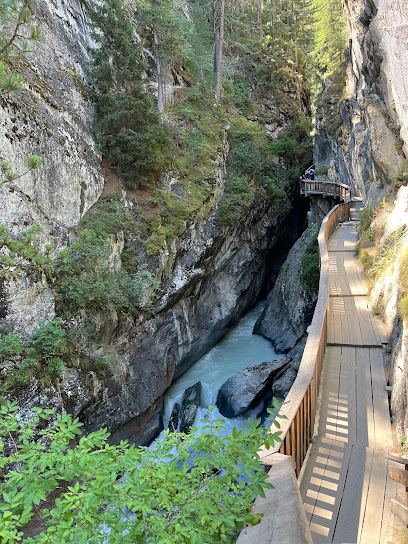
Canoe and Rafting Center Monrosa
Experience thrilling adventures at Canoe and Rafting Center Monrosa, an ultimate destination for water sports enthusiasts in the heart of Balmuccia.

Riffelsee
Discover the breathtaking beauty of Riffelsee, a serene alpine lake reflecting the iconic Matterhorn in the heart of Zermatt, Switzerland.
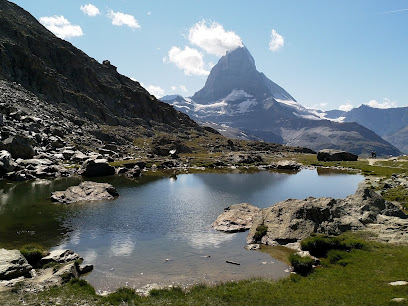
Pfarrkirche St. Mauritius
Discover the enchanting Pfarrkirche St. Mauritius in Zermatt, a serene Catholic church with stunning architecture and breathtaking alpine views.
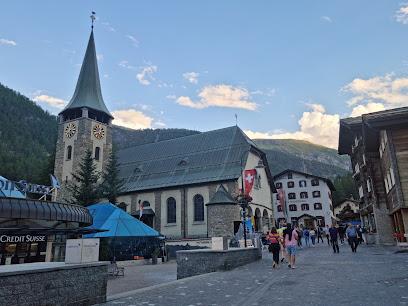
Leisee
Discover the enchanting beauty of Leisee, a serene alpine lake in Zermatt, Switzerland, perfect for relaxation and outdoor adventures.
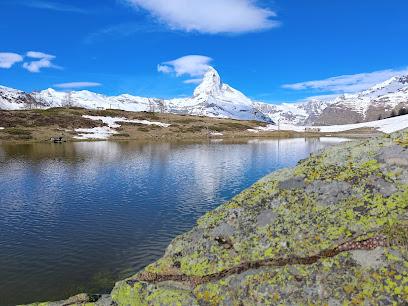
Grünsee
Explore Grünsee in Zermatt, a serene lake surrounded by majestic mountains, perfect for relaxation, hiking, and capturing breathtaking views.
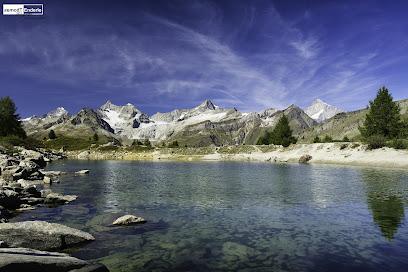
Observatorium Gornergrat
Experience the breathtaking views and celestial wonders at Gornergrat Observatory in the Swiss Alps, a must-visit destination for all travelers.

Grand Tour of Switzerland ViewPoint Gornergrat-Matterhorn
Discover unparalleled alpine beauty at Gornergrat, the ultimate viewpoint for panoramic views of the Matterhorn and surrounding peaks in Switzerland.
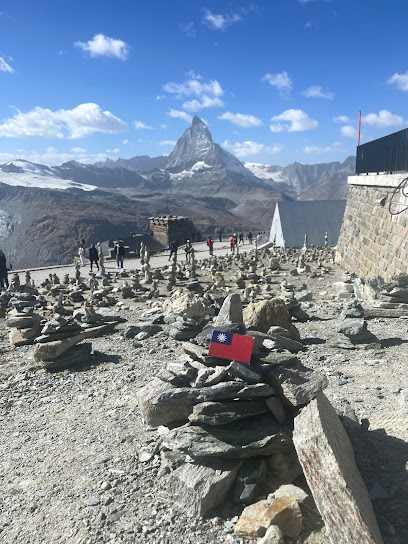
Steinmännchen
Discover the stunning rock formations of Steinmännchen in Zermatt, a breathtaking tourist attraction surrounded by the majestic Swiss Alps.

Römisch-katholisches
Explore the Römisch-katholisches Church in Zermatt, a stunning architectural marvel nestled in the breathtaking Swiss Alps, perfect for peaceful reflection.
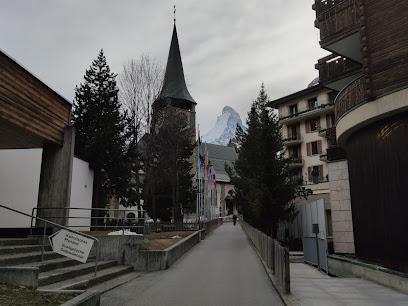
Zinal
Discover the beauty of Zinal, Switzerland, where stunning alpine landscapes meet thrilling outdoor adventures in every season.
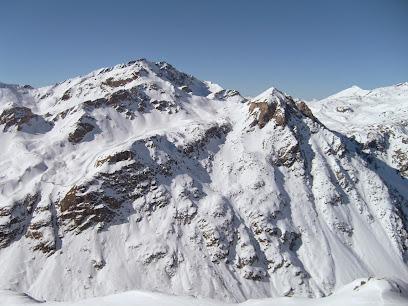
Essential places to dine
Chez Vrony
Experience authentic Swiss cuisine at Chez Vrony in Zermatt with stunning views of the Alps.
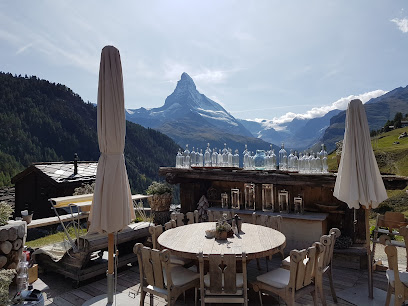
Du Pont
Savor authentic Swiss cheese dishes at Du Pont in Zermatt – your gateway to fondue perfection and unforgettable alpine views.

Fluhalp (Mountain Hut & Restaurant)
Experience authentic Swiss cuisine and breathtaking alpine views at Fluhalp Mountain Hut & Restaurant in Zermatt.
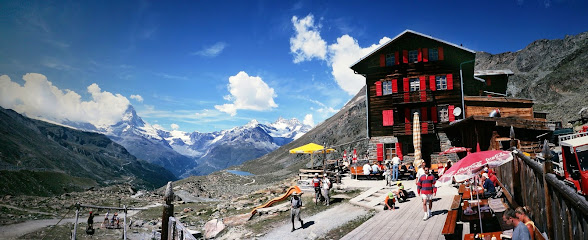
Bergrestaurant Blatten
Experience authentic Swiss cuisine at Bergrestaurant Blatten with breathtaking mountain views in Zermatt.
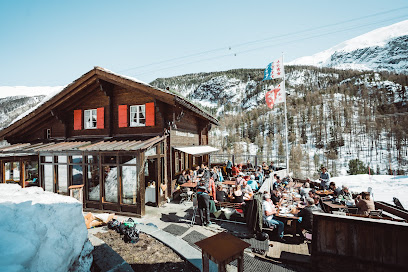
Alphitta
Experience authentic Swiss cuisine at Alphitta in Zermatt - where every dish tells a story amidst breathtaking Alpine views.
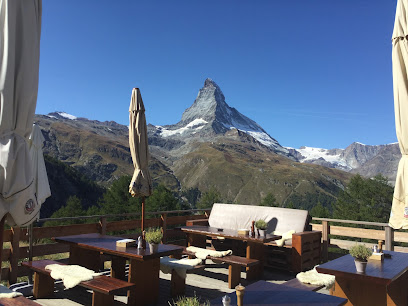
Restaurant Zum See
Experience authentic Swiss cuisine amidst breathtaking alpine views at Restaurant Zum See in Zermatt.
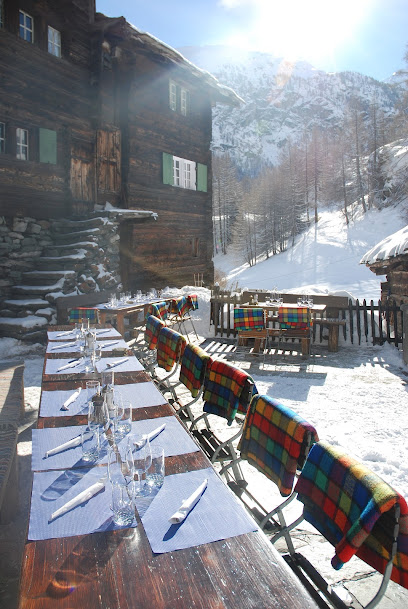
Adler Hitta
Experience authentic Swiss cuisine at Adler Hitta in Findeln, Zermatt - where gourmet dining meets breathtaking alpine views.
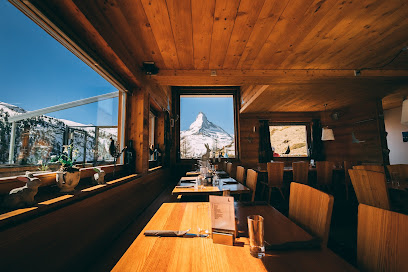
Spycher
Experience authentic Swiss barbecue at Spycher in Zermatt, where culinary excellence meets stunning alpine views.
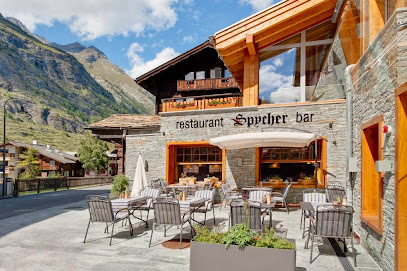
Findlerhof
Experience authentic Swiss cuisine amidst breathtaking Alpine views at Findlerhof in Zermatt.

@Paradise
Experience authentic Swiss cuisine at Paradise in Zermatt - where stunning views meet delicious flavors.
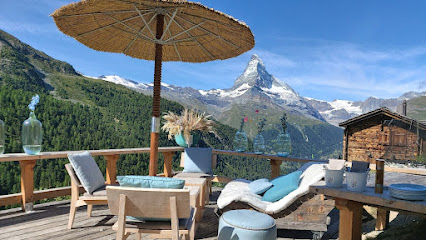
Madre Nostra by CERVO
Experience authentic Northern Italian cuisine at Madre Nostra by CERVO in Zermatt - where every meal is a journey through Italy's rich culinary heritage.
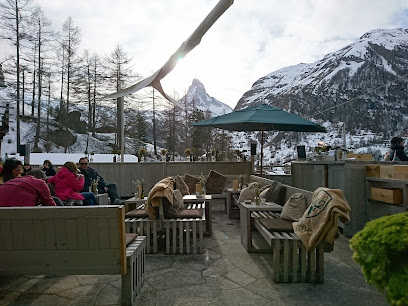
Sonnmatten Restaurant & Suite
Experience exquisite Swiss cuisine and stunning alpine views at Sonnmatten Restaurant & Suite in Zermatt.

Buffet & Bar Riffelberg
Experience authentic Swiss cuisine with stunning alpine views at Buffet & Bar Riffelberg in Zermatt.
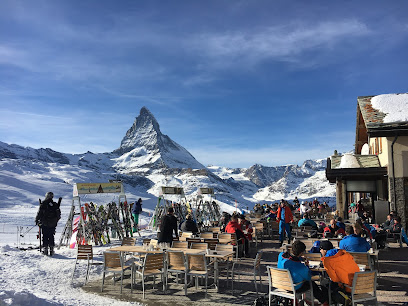
Restaurant Furri
Discover exceptional Swiss cuisine and breathtaking mountain views at Restaurant Furri in Zermatt.
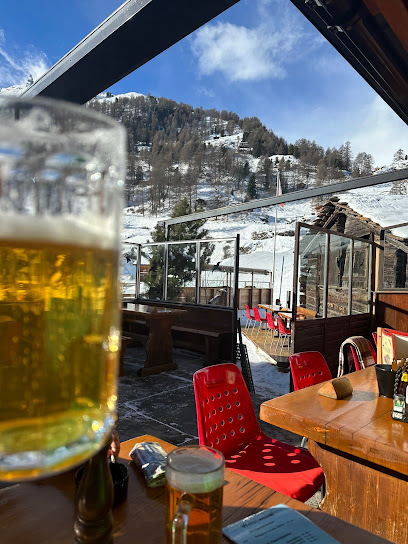
Stockhorn by the rex
Discover Stockhorn by the Rex: A premier barbecue restaurant in Zermatt offering organic delights amidst stunning alpine views.

Markets, malls and hidden boutiques
Lindt Chocolate Shop Zermatt
Explore the sweet side of Zermatt at Lindt Chocolate Shop, where premium Swiss chocolates await in a picturesque Alpine setting.
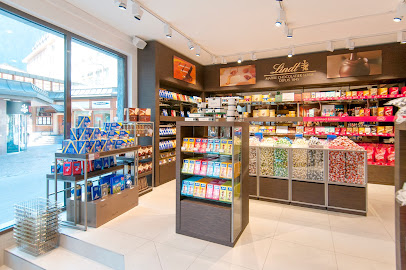
Julen Sport
Explore Zermatt's rugged beauty with top-quality gear from Julen Sport, the ultimate destination for outdoor enthusiasts.
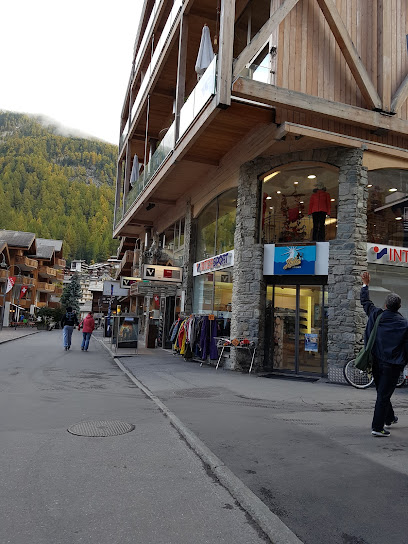
Läderach Chocolate Store
Discover the exquisite artistry of Swiss chocolates at Läderach, Zermatt's premier chocolate artisan, offering handcrafted treats that delight the senses.

Bayard Sports & Fashion
Explore Bayard Sports & Fashion in Zermatt for quality gear and stylish apparel, ideal for outdoor adventure enthusiasts and fashion lovers alike.
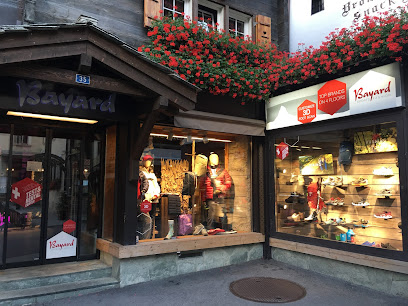
Olmo Zermatt
Discover the stylish offerings at Olmo Zermatt, where fashion meets Alpine charm in the heart of Switzerland.
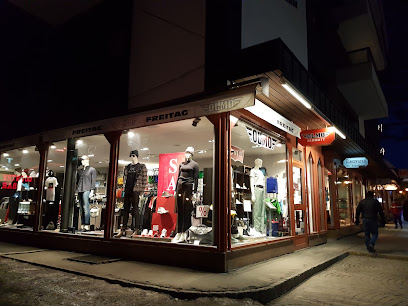
Mountain Shop Zermatt
Discover quality outdoor clothing and equipment at Mountain Shop Zermatt, your go-to destination for alpine adventures in the stunning Swiss Alps.

Breitling Boutique
Discover the elegance of Breitling watches in Zermatt, a luxurious boutique showcasing timeless craftsmanship and innovative design amidst stunning alpine scenery.
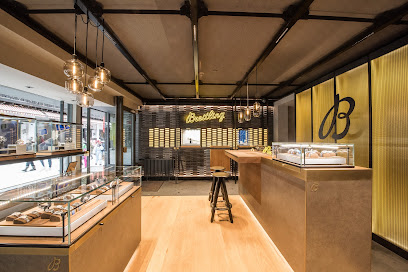
CALIDA Store
Explore the exquisite CALIDA Store in Zermatt for premium underwear and stylish clothing for the whole family amidst the Swiss Alps.
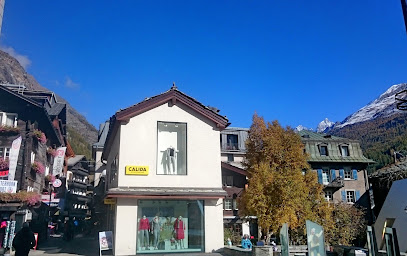
MAISON DAVIS - Concept Store & Art Gallery
Experience the artistry and elegance at MAISON DAVIS in Zermatt, a unique concept store blending art, jewelry, and collectibles.
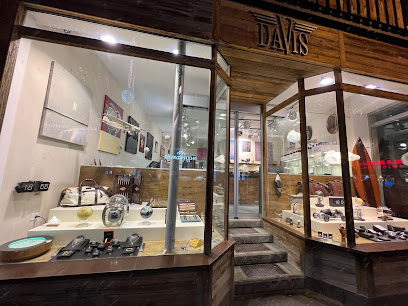
TISSOT Zermatt Store
Experience Swiss luxury at TISSOT Zermatt Store – where timeless craftsmanship meets breathtaking alpine beauty.
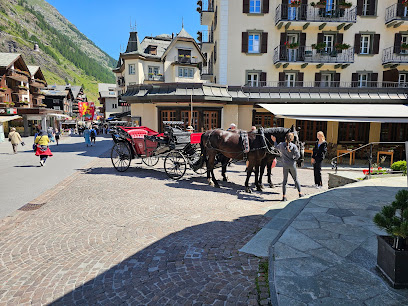
Hublot Zermatt Boutique
Discover unparalleled luxury at the Hublot Zermatt Boutique, where exquisite timepieces meet the breathtaking beauty of the Swiss Alps.
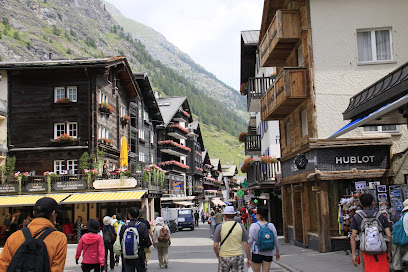
OMEGA Boutique - Zermatt
Explore the luxurious OMEGA Boutique in Zermatt, Switzerland, where precision meets elegance in stunning timepieces and accessories.
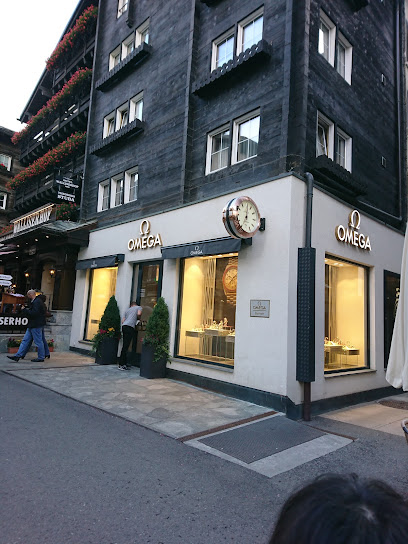
Wega
Explore Wega, Zermatt's charming souvenir store, offering unique local crafts and authentic memorabilia to capture your alpine adventure.
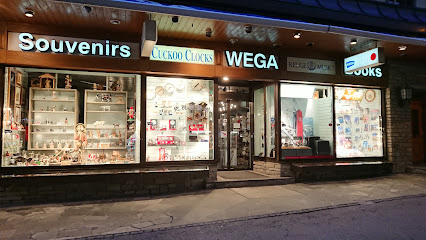
Millet Zermatt
Discover top-tier outdoor gear at Millet Zermatt, the ultimate destination for adventurers in the Swiss Alps, offering a diverse selection for your outdoor pursuits.
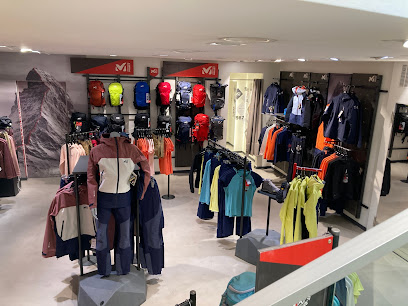
The shoeshop, Kunkel AG
Discover stylish footwear and accessories at The Shoeshop, Kunkel AG in Zermatt, your go-to destination for fashion in the Swiss Alps.
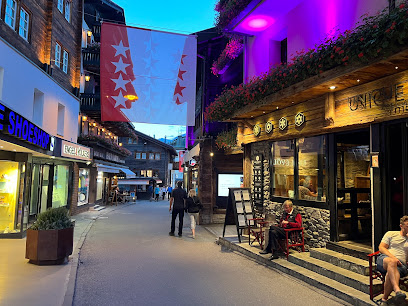
Essential bars & hidden hideouts
Brown Cow - pub
Experience the warmth of Zermatt at Brown Cow Pub, where alpine charm meets delightful cuisine and an extensive drink selection.
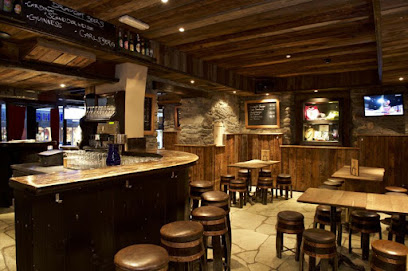
The North Wall Bar & Restaurant
Experience the charm of Zermatt at The North Wall Bar & Restaurant, where delicious pizzas and local flavors meet a cozy alpine atmosphere.
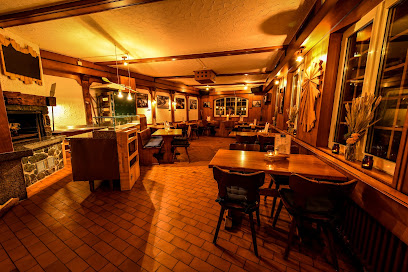
Blue Lounge
Experience the perfect blend of Swiss culinary excellence and breathtaking mountain views at Blue Lounge in Zermatt.
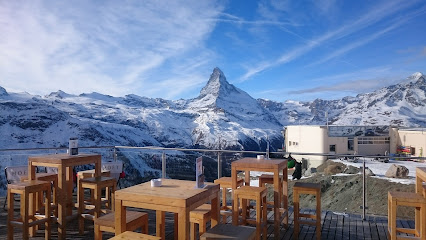
Alex Lounge Bar & Fumoir
Discover the charm of Alex Lounge Bar & Fumoir in Zermatt, where exquisite drinks meet a cozy, elegant atmosphere for a perfect evening.

Snowboat
Discover the vibrant atmosphere at Snowboat, Zermatt's premier cocktail bar, where mixology meets alpine charm.

Hexenbar
Discover the magical ambiance of Hexenbar, Zermatt's enchanting bar with themed drinks and a cozy atmosphere perfect for any traveler.
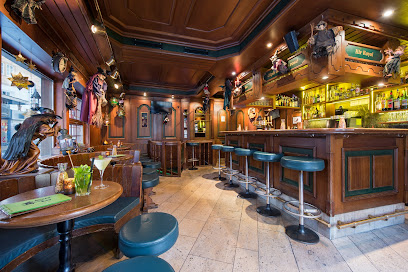
Papperla Pub
Papperla Pub in Zermatt: A lively bistro pub offering delicious meals and a vibrant atmosphere for unforgettable nights in the Swiss Alps.

Harry's Ski Bar
Experience the heart of Zermatt at Harry's Ski Bar, where alpine charm meets vibrant nightlife and unforgettable memories await.

Elsie's Wine and Champagne Bar
Experience the elegance of Elsie's Wine and Champagne Bar in Zermatt, where a curated selection of exquisite beverages meets a cozy atmosphere.
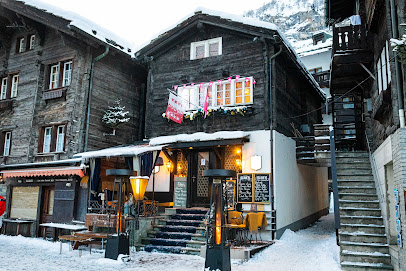
Bar 55
Discover Bar 55, a chic lounge in Zermatt, offering a delightful range of cocktails and a cozy atmosphere to unwind after exploring the Swiss Alps.
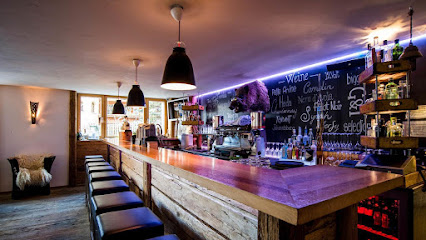
Grizzly's Bar & Bistro
Experience the warmth and flavor of Grizzly's Bar & Bistro, a top gastropub in Zermatt offering local and international cuisine in a cozy setting.
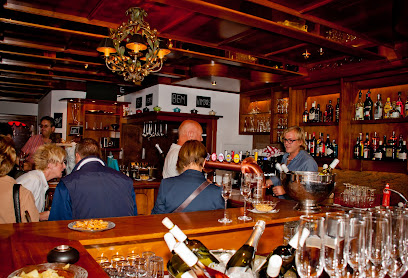
Alpenhof Bar & Cigar Lounge
Discover the luxurious Alpenhof Bar & Cigar Lounge in Zermatt, where exquisite wines, premium cigars, and live piano music create an unforgettable atmosphere.
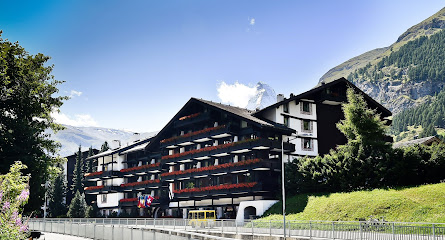
Papa Caesar - lounge bar
Discover the ultimate relaxation at Papa Caesar, Zermatt's premier lounge bar featuring exquisite drinks and stunning views of the Matterhorn.
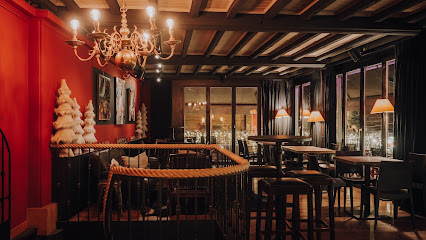
Restaurant vis-à-vis
Experience exquisite Swiss dining at 3100 meters with breathtaking views at Restaurant vis-à-vis in Zermatt.
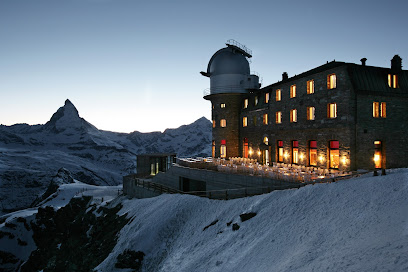
Little Bar
Experience Swiss hospitality at Little Bar, your cozy retreat in Zermatt, offering a delightful selection of drinks and vibrant atmosphere.
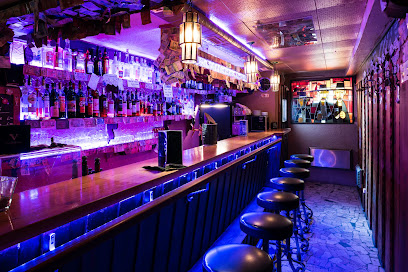
Local Phrases about Gornergrat
-
- HelloGrüezi
[gru-e-tsi] - GoodbyeAdieu
[a-dju] - YesJa
[ya] - NoNein
[nine] - Please/You're welcomeBitte
[bit-te] - Thank youDanke
[dank-e] - Excuse me/SorryEntschuldigung
[ent-shul-di-gung] - How are you?Wie geht es Ihnen?
[vee gayt es een-en] - Fine. And you?Gut. Und Ihnen?
[goot oont een-en] - Do you speak English?Sprechen Sie Englisch?
[shpre-chen zee eng-lisch] - I don't understandIch verstehe nicht
[ikh fer-shtay-e nikht]
- HelloGrüezi
-
- I'd like to see the menu, pleaseIch möchte bitte die Speisekarte sehen
[ikh merkh-te bit-te dee shpy-ze-kar-te zay-en] - I don't eat meatIch esse kein Fleisch
[ikh es-se kine fli-sh] - Cheers!Prost!
[prost] - I would like to pay, pleaseIch möchte bitte zahlen
[ikh merkh-te bit-te tsah-len]
- I'd like to see the menu, pleaseIch möchte bitte die Speisekarte sehen
-
- Help!Hilfe!
[hil-fe] - Go away!Gehen Sie weg!
[ge-en zee vayg] - Call the Police!Rufen Sie die Polizei!
[roo-fen zee dee po-lee-tsy] - Call a doctor!Rufen Sie einen Arzt!
[roo-fen zee i-nen arts-t] - I'm lostIch bin verloren
[ikh been fer-lo-ren] - I'm illIch bin krank
[ikh been kr-ank]
- Help!Hilfe!
-
- I'd like to buy...Ich möchte ... kaufen
[ikh merkh-te ... kow-fen] - I'm just lookingIch schaue nur
[ikh sh-ow-e noor] - How much is it?Wie viel kostet es?
[vee feel kow-shtet es] - That's too expensiveDas ist zu teuer
[dahs ist tso toy-er] - Can you lower the price?Können Sie den Preis senken?
[kern-en zee den price zank-en]
- I'd like to buy...Ich möchte ... kaufen
-
- What time is it?Wie spät ist es?
[vee shpet ist es] - It's one o'clockEs ist ein Uhr
[es ist iyn oor] - Half past (10)Halb (10)
[halb (10)] - MorningMorgen
[mor-gen] - AfternoonNachmittag
[nahk-mit-tahg] - EveningAbend
[ah-bent] - YesterdayGestern
[ges-tern] - TodayHeute
[hoyt-e] - TomorrowMorgen
[mor-gen] - 1Eins
[iyns] - 2Zwei
[tsvay] - 3Drei
[dry] - 4Vier
[feer] - 5Fünf
[foonf] - 6Sechs
[zeks] - 7Sieben
[zee-ben] - 8Acht
[ahkt] - 9Neun
[noyn] - 10Zehn
[tsayn]
- What time is it?Wie spät ist es?
-
- Where's a/the...?Wo ist ein/der...?
[vo ist iyn/der] - What's the address?Was ist die Adresse?
[vas ist dee a-dre-suh] - Can you show me (on the map)?Können Sie mir zeigen (auf der Karte)?
[kern-en zee meer tsay-gen (ouf der kar-te)] - When's the next (bus)?Wann ist der nächste (Bus)?
[van ist der nakh-ste (boos)] - A ticket (to ....)Eine Fahrkarte (nach ...)
[i-nuh fahr-kar-te (nakh)]
- Where's a/the...?Wo ist ein/der...?
History of Gornergrat
-
Gornergrat, part of the Pennine Alps, was formed millions of years ago through the collision of the African and Eurasian tectonic plates. Its rugged topography and dramatic peaks have been shaped by glacial movements, making it a significant geological landmark in Switzerland.
-
The first recorded ascent of Gornergrat was by Horace-Bénédict de Saussure in the late 18th century. This marked the beginning of mountaineering in the region, attracting adventurers and climbers from all over the world, eager to conquer its peaks and explore its glaciers.
-
The Gornergrat Railway, inaugurated in 1898, revolutionized access to the region. It was one of the world's first fully electrified cog railways, allowing tourists to effortlessly reach the summit and enjoy panoramic views of the surrounding mountains, including the Matterhorn.
-
Throughout the 20th century, Gornergrat saw significant development in tourism infrastructure. Hotels, restaurants, and viewing platforms were constructed to accommodate the growing number of visitors, establishing Gornergrat as a premier travel destination in the Swiss Alps.
-
The high-altitude location of Gornergrat has made it an ideal site for scientific research. The Gornergrat Observatory, built in 1960, has been pivotal in astronomical studies, contributing valuable data to our understanding of the cosmos and the Earth's atmosphere.
-
Gornergrat holds cultural significance for the local Swiss communities. Traditional festivals, folklore, and customs are celebrated in the region, reflecting the rich heritage and deep connection of the people with the mountains. These cultural elements enhance the unique charm of Gornergrat.
Gornergrat Essentials
-
Gornergrat is located in the Swiss Alps, near the town of Zermatt. The most convenient way to reach Gornergrat is by train. From major Swiss cities like Zurich or Geneva, you can take a train to Visp, and then transfer to a regional train to Zermatt. From Zermatt, the Gornergrat Bahn cogwheel railway takes you directly to the summit of Gornergrat. The entire journey offers stunning alpine views and is a highlight of the trip.
-
The main mode of transportation in the Gornergrat area is the Gornergrat Bahn, which operates year-round and provides regular services from Zermatt to the Gornergrat summit. In Zermatt, the town is car-free, so electric taxis, buses, and horse-drawn carriages are the primary means of getting around. Walking and cycling are also popular ways to explore the town and its surroundings. For longer trips, such as visiting nearby valleys or ski resorts, regional trains and cable cars are available.
-
The official currency of Switzerland is the Swiss Franc (CHF). Credit and debit cards are widely accepted in Zermatt and at the Gornergrat summit. However, it's advisable to carry some cash for smaller purchases or in case of any technical issues with card payments. ATMs are available in Zermatt for cash withdrawals. Note that some places may not accept foreign currency, so exchanging money beforehand is recommended.
-
Gornergrat and Zermatt are generally very safe destinations with low crime rates. However, it's always wise to take standard precautions. Keep your belongings secure, especially in crowded areas like train stations. Avoid hiking alone in remote areas, and always inform someone of your plans. There are no specific high-crime areas targeting tourists, but staying vigilant and aware of your surroundings is always recommended.
-
In case of emergency, dial 112 for immediate assistance. Zermatt has a local police station and medical facilities, including a hospital. For minor health issues, pharmacies are available in town. It is highly recommended to have travel insurance that covers medical emergencies, especially if you plan on engaging in outdoor activities like hiking or skiing. Mountain rescue services are also available and can be contacted through the emergency number.
-
Fashion: Do wear comfortable and weather-appropriate clothing, especially if you plan to hike or ski. Don’t wear high heels or impractical footwear. Religion: Do respect local customs and traditions. Public Transport: Do be punctual and respect the quietness of Swiss trains. Don’t eat or drink on public transport. Greetings: Do greet people with a friendly 'Grüezi' (hello) or a handshake. Eating & Drinking: Do try local Swiss delicacies like raclette and fondue. Don’t leave a tip on the table; tipping is generally included in the bill.
-
To experience Gornergrat like a local, consider visiting outside of peak tourist seasons in winter and summer. This will allow you to enjoy a more peaceful environment. Engage with locals in Zermatt, many of whom speak English and are happy to share their knowledge. Don’t miss the opportunity to visit the Matterhorn Museum in Zermatt to learn about the region’s history. For a unique dining experience, book a meal at one of the mountain huts (Berghütten) where you can enjoy traditional Swiss cuisine with breathtaking views.
Nearby Cities to Gornergrat
-
Things To Do in Murren
-
Things To Do in Grindelwald
-
Things To Do in Interlaken
-
Things To Do in Ascona
-
Things To Do in Locarno
-
Things To Do in Montreux
-
Things To Do in Thun
-
Things To Do in Vevey
-
Things To Do in Lugano
-
Things To Do in Turin
-
Things To Do in Lausanne
-
Things To Do in Bern
-
Things To Do in Milan
-
Things To Do in Lucerne
-
Things To Do in Annecy










